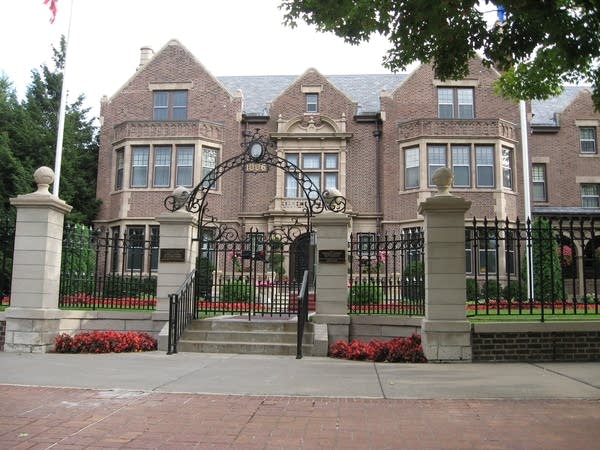Officials pull plug on high-speed cable for governor's mansion amid cost questions
Go Deeper.
Create an account or log in to save stories.
Like this?
Thanks for liking this story! We have added it to a list of your favorite stories.

Updated 4:30 p.m.
State officials have shelved plans to build a fiber-optic line connecting the governor's residence to the Minnesota History Center. The move came after MPR News raised questions about the project's purpose and its $261,000 cost.
"We are reexamining the best solutions for establishing secure communications between the Capitol complex and the residence as we determine how to best support security efforts," said Curt Yoakum, spokesman for the Minnesota Department of Administration.
Asked what spurred the reexamination, Yoakum replied, "ensuring the most cost-effective solution to meet long-term needs."
Turn Up Your Support
MPR News helps you turn down the noise and build shared understanding. Turn up your support for this public resource and keep trusted journalism accessible to all.
Documents show the project had been in the works since last year. In October, the Department of Administration opened the bidding process for burying the two-mile-long line — the project's most expensive part. In January, it awarded the contract to TD&I Cable Maintenance of Lakeland, Minn. The company's $213,000 bid was the lowest of the four submitted.
On Aug. 20, the St. Paul City Council approved the proposal to bury the cable beneath Summit Avenue. One week later — nine days after MPR News first contacted the Administration Department to ask about the cable's purpose and cost — the state put the project on hold.
"Maybe they didn't do their due diligence on what the payback and the alternatives were, and they were afraid of somebody asking them those questions," said Gary Elert, president of the technology consulting firm Elert & Associates, which performed design and engineering work on the project.
TD&I will likely receive partial payment to reimburse it for document preparation and meeting time, Yoakum said. The company declined to comment. Elert said he wasn't sure whether his company had received any money for its work on the project yet, but he expected the state to honor the $35,400 contract.
The project's purpose remains unclear. Yoakum said only that it was "related to security" at the governor's residence.
On Friday, Department of Public Safety spokesman Bruce Gordon said the line would have allowed for "monitoring of security and fire systems, just like the monitoring that occurs at the 17 other buildings in the Capitol Complex."
Fiber-optic cable carries data at speeds at least 10 times faster than those currently available to residential internet customers in St. Paul. US Internet provides fiber-optic service to select neighborhoods in Minneapolis.
CenturyLink recently announced plans to make fiber-to-the-home service available to hundreds of thousands of Twin Cities customers over the next year or two. It plans to start construction next month in St. Paul.
Built in 1912, the governor's residence has been home to Minnesota governors since 1966. The Department of Administration, which takes care of state-owned buildings, began a $2.5 million restoration of the building last year. While security enhancements were part of that project, Yoakum said the fiber-optic line was not.
The line would have started in the carriage house behind the Summit Avenue mansion and ended in an equipment room at the Minnesota History Center on Kellogg Boulevard, which is already connected to the state Capitol's fiber-optic network.
Gov. Mark Dayton is up for re-election this year. Dayton's Republican opponent, Hennepin County Commissioner Jeff Johnson, has attacked him over the new $89 million Senate Office Building currently under construction across the street from the Capitol.
Installing fiber-optic cable often pays for itself in the long run because it can replace the need for separate Internet, telephone and other communication systems, Elert said.
Fiber also has speed and security advantages, but Elert acknowledged that the project's price tag made for "an expensive two-mile run." To make such installations cost-effective, he said, governments will sometimes install extra fiber-optic capacity and rent it out to other customers.
"If they were just totally dedicating the whole thing for the governor," said Elert, "maybe that's how they couldn't justify it."


